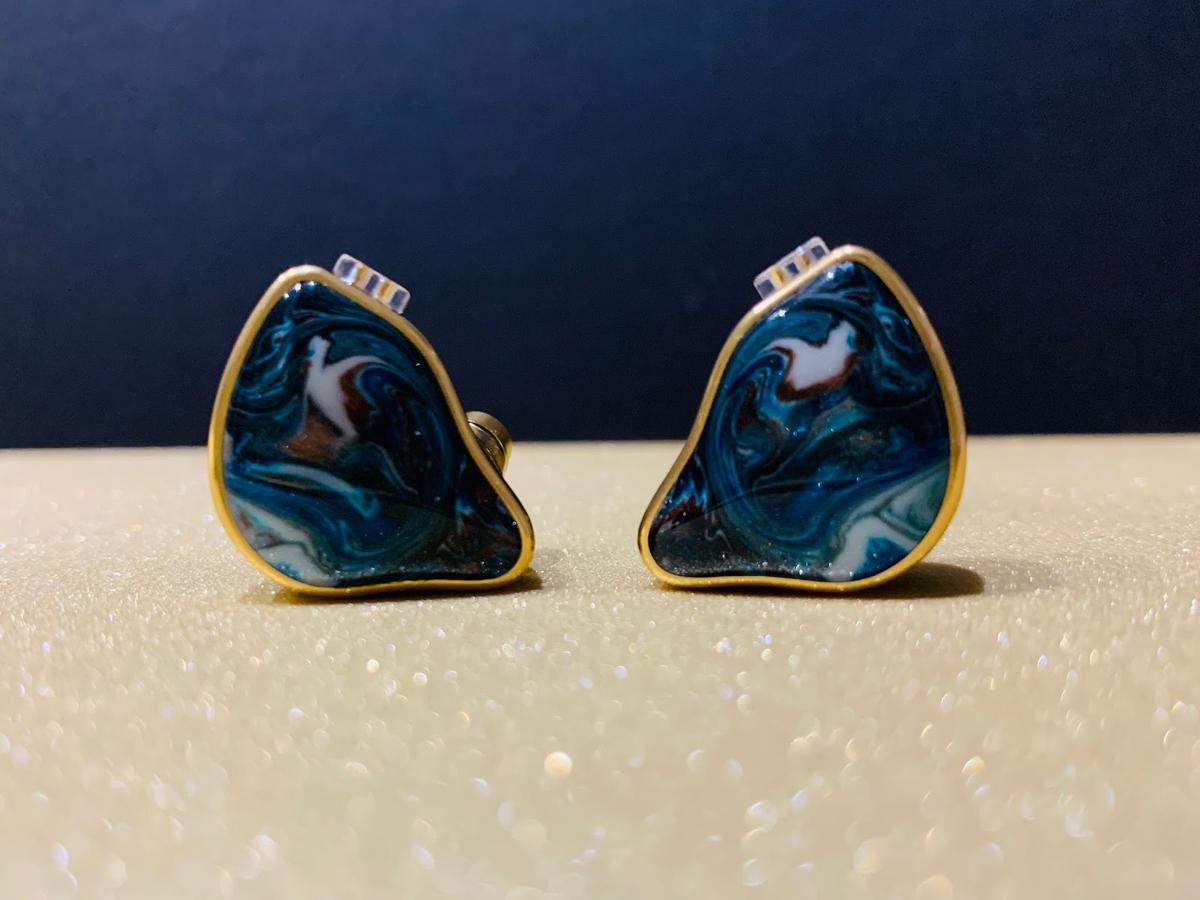The NX7 MK4 tribrid IEMs boast great versatility with three distinct tuning options.
En. Eks. Seven. Em. Kay. Four. NX7 MK4. How did this mouthful of alphabet soup of a name come about? This appellation sounds more like a droid from a Star Wars movie!
The pioneer in the series, the original NX7, were released in 2019. They were a proof-of-concept for a tribrid containing an eclectic array of drivers – BAs, a piezoelectric driver, and a carbon nanotube dynamic driver were all hemmed in.
Lamentably, exotic drivers do not necessarily good sound maketh, and most users derided the NX7 for being too harsh in the treble.
- Well accessorized
- Solid build
- Comfortable
- Easy to drive
- Versatile – tuning nozzles give three different sonic configurations
- Above average technicalities (except soundstage) and fast transients with some tuning nozzles
- Intimate soundstage
- BA/piezoelectric timbre
- Red (treblehead) filter may be too harsh and sibilant for treble-sensitive folks
- Bass is slow and bleeds on the black (basshead) filter
NiceHCK then came up with the NX7 Pro, which contained tuning filters to change the sound signature coupled with swappable faceplates. Likewise, the piezoelectric drivers proved a tough beast to tame, and feedback garnered was that the NX7 Pro were also sibilant and fatiguing, not unlike their predecessor.
After that, the NX7 MK3 were released in an attempt to absolve the sins of their forefathers. Was the third time the charm? Well, the NX7 MK3 had upgraded drivers, and some of the tuning filters seemingly tamed the shoutiness of the previous two NX7 models.
However, reviews were lukewarm, and the NX7 MK3 flew under the radar, with only a small cult following recommending them.
The NX7 MK4 are the fourth iteration in the NX7 lineage from NiceHCK.
Let’s hope today’s NX7 MK4 will be the bee’s knees and prove the most successful of the lot!
Company Overview
NiceHCK was conceived in 2015, and since then, has gone on to be one of the big players in the ChiFI industry. NiceHCK’s products include earbuds such as the EBX21, EB2S, Traceless, and B40, to IEMs such as the aforementioned NX7 series, and others like the F1, DB3, DB1, and Topguy.
The company also has a wide selection of cables and accessories like ear tips and cases.
Technical Specifications
- Form: IEMs
- Drivers: 4 x balanced armature drivers + 1 x 10mm beryllium-plated dual dynamic driver + 1 x seven-layer piezoelectric driver
- Impedance (Ohm): 39Ω
- Sensitivity (dB): Gold filter 112dB/mw, Red filter 113dB/mw, Black filter 110dB/mw
- Frequency Response (Hz): 20Hz – 28kHz
- Removable Cable: Y
- Cable: OCC (Ohno continuous cast) and silver-plated mixed cable
- Source Plug: choice of 3.5mm or 4.4mm termination
- Cup/Shell Plug: 0.78mm, 2-Pin
Packaging
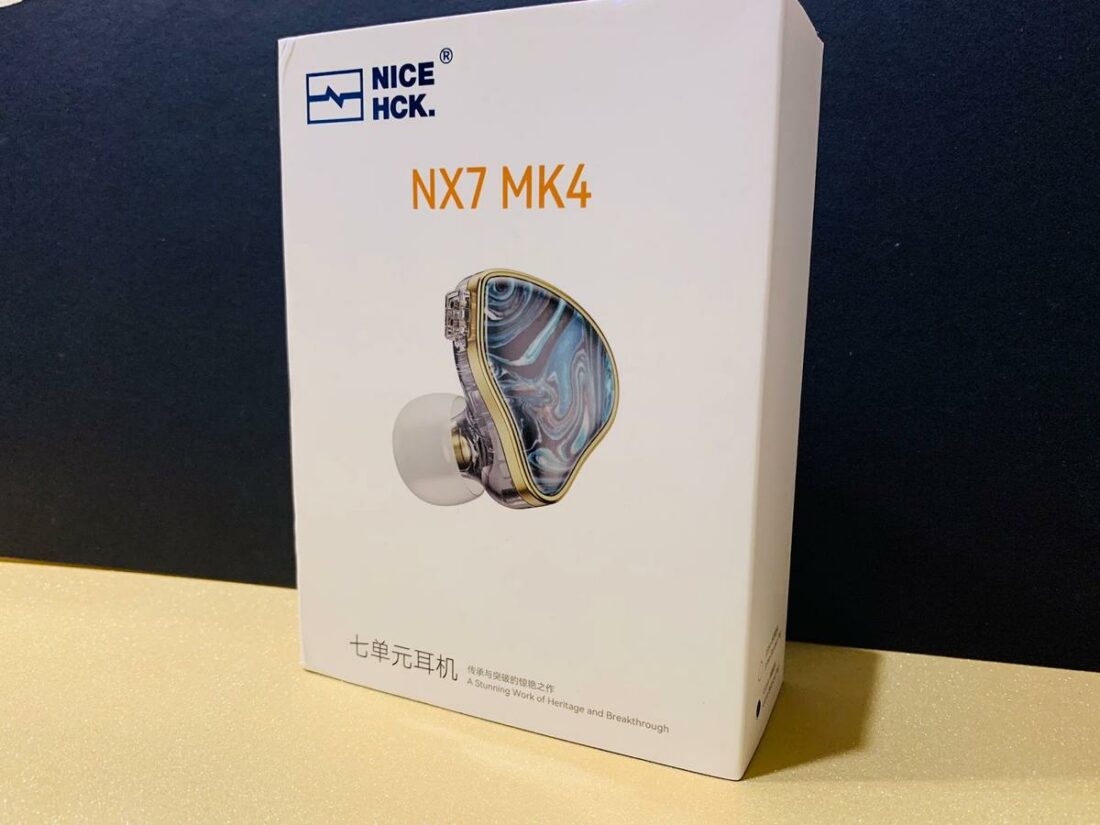
In the box
- NiceHCK NX7 MK4 IEMs
- 3 pairs of narrow-bore silicone ear tips (S, M, L)
- 3 pairs of wide-bore silicone ear tips (S, M, L)
- Leatherette case
- Cable
- 3 tuning nozzles
The accessories are decent enough for an IEM retailing near the USD$100 mark. Perhaps foam tips could have been added, but the included accessories are quite serviceable.
Two variants of silicone ear tips are provided. The narrow-bore (black) tips increase bass (but compress soundstage), whereas the wide-bore (white) ones boost upper frequencies and air, with a slightly more expansive soundstage.
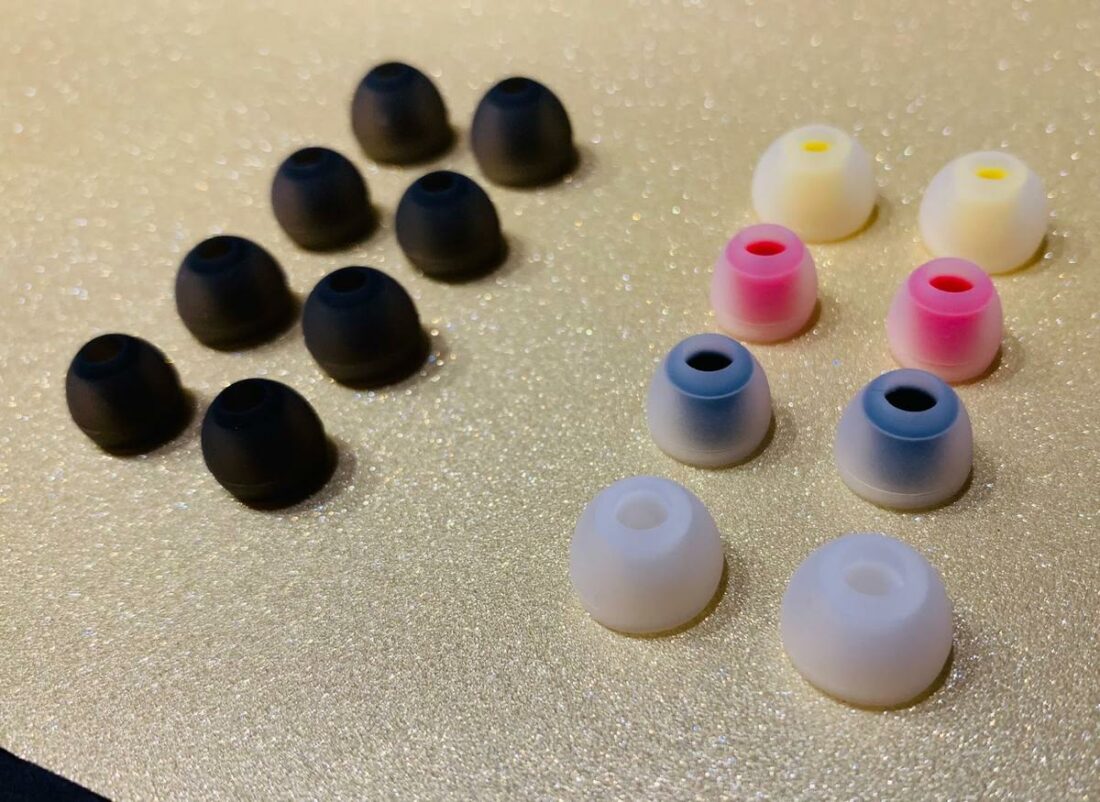
Cable
During ordering, one can opt for a 3.5mm (single-ended) or 4.4mm (balanced) stock cable. The cable is fashioned from an OCC (Ohno continuous cast) copper and silver-plated mix. It is quite agreeable from a haptic point of view – being thick, well-braided, and tangle-free, with minimal microphonics. An added chin-cinch adds stability during usage.
I’m a proponent of 2-pin cables, as I have experienced my fair share of MMCX connectors failing on me during frequent cable changes. Thus, the longevity of connectors shouldn’t be an issue on the NX7 MK4.
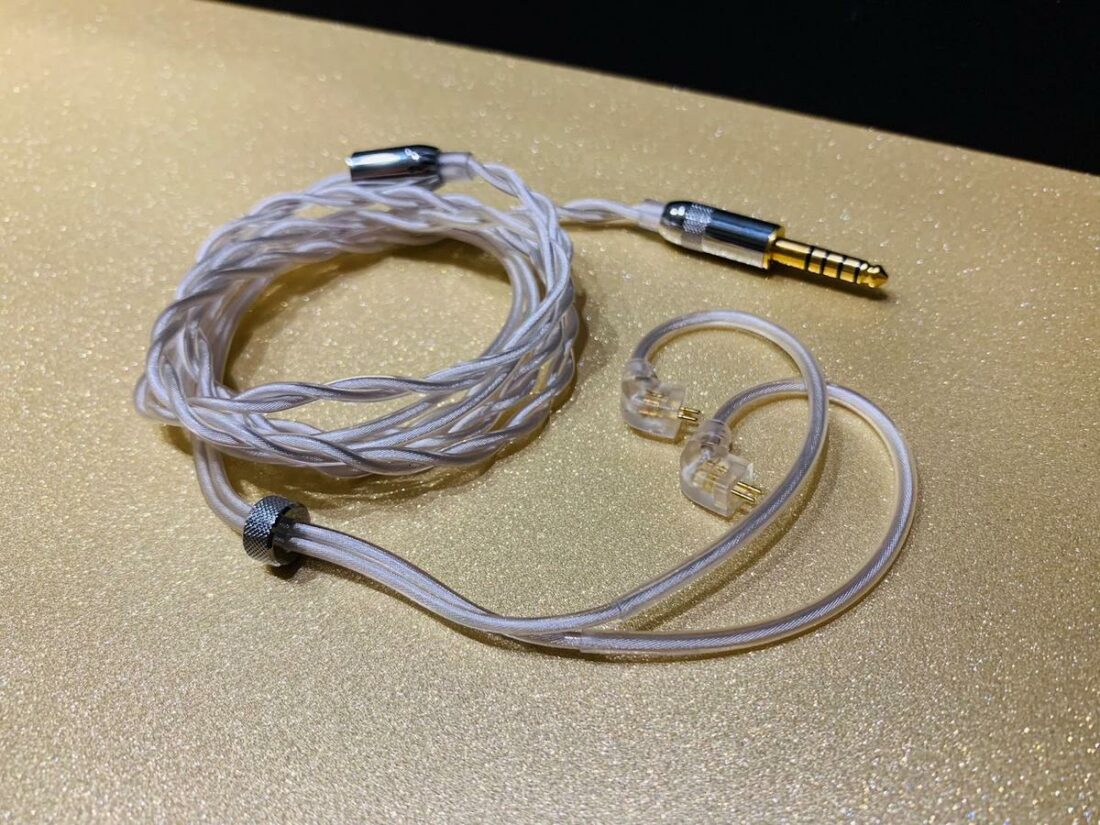
Case
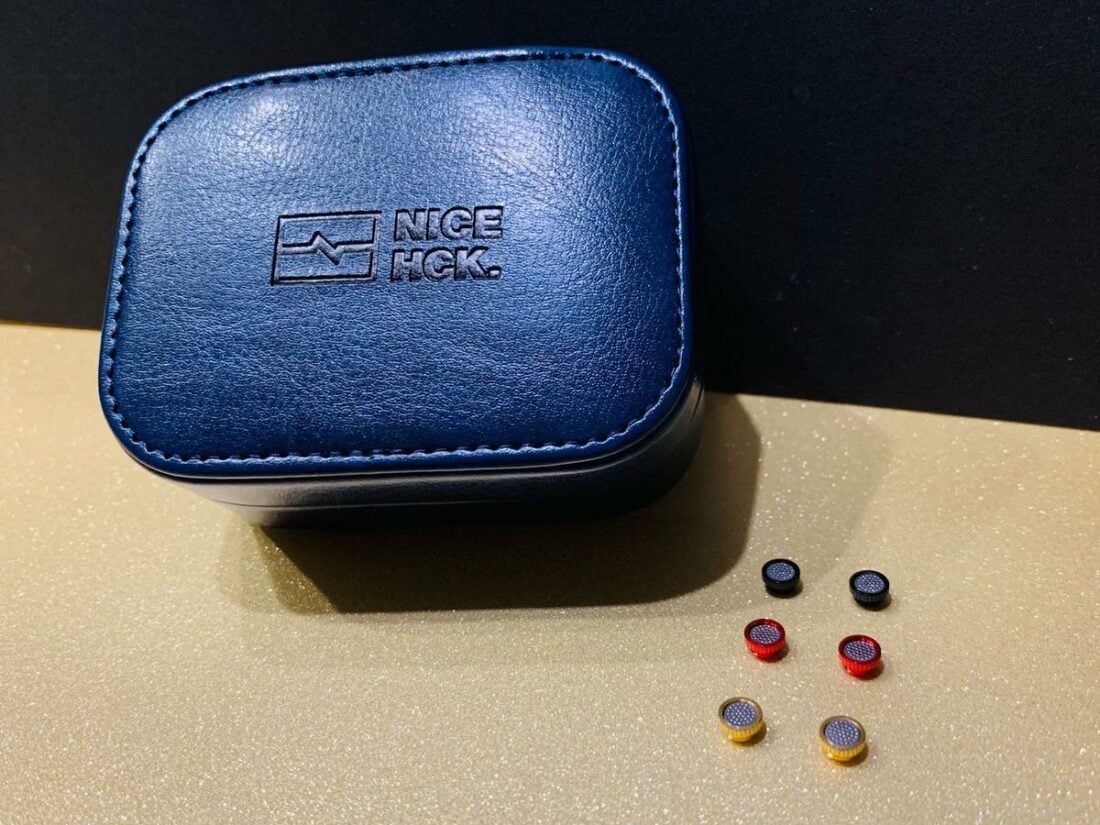
The included blue leatherette case is semi-rigid and quite spacious; one can fit in these IEMs with some other accessories to spare. The inner layer has webbing and is lined with velvet to cushion the contents.
Three tuning nozzles are provided in the packaging; they operate via a screw-on mechanism on the IEMs’ nozzle. As we will discuss below, these nozzles provide different tuning options on the fly, thus making the NX7 MK4 extremely versatile.
Design
The NX7 MK4s shells are painstakingly constructed from four different materials via a complex process.
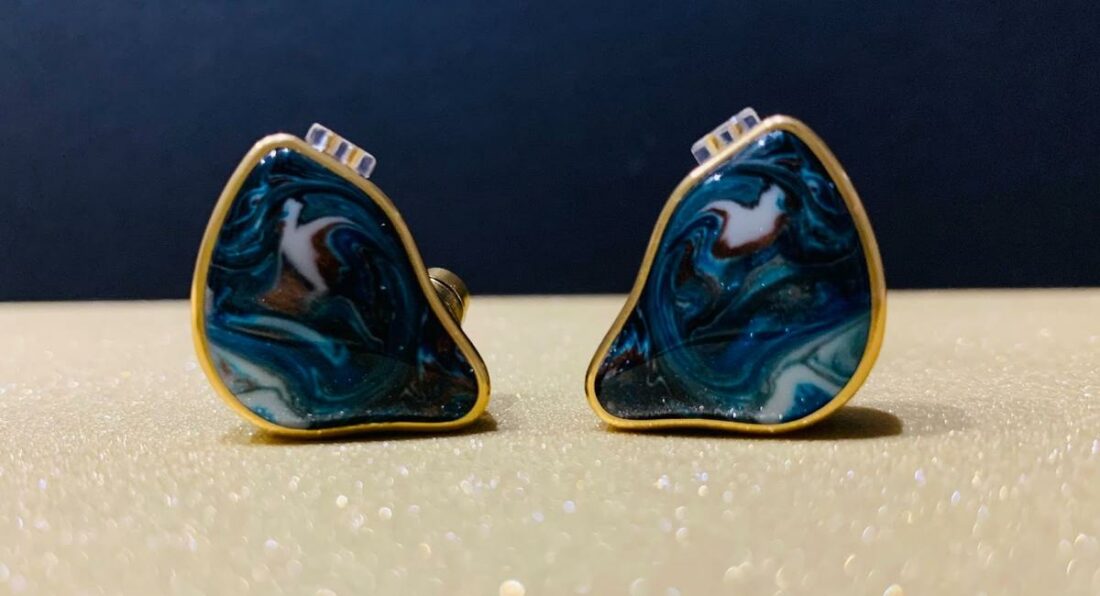
- The inner aspect of the shells are manufactured from a polycarbonate frame.
- Stabilized wood forms the faceplate, and this incorporates a mother-of-pearl whirly design.
- The faceplate is then lacquered with environmental resin.
- An aluminum alloy links the wooden faceplate to the inner polycarbonate housing.
The build of this pair of IEMs is quite solid; I have no complaints on this front.
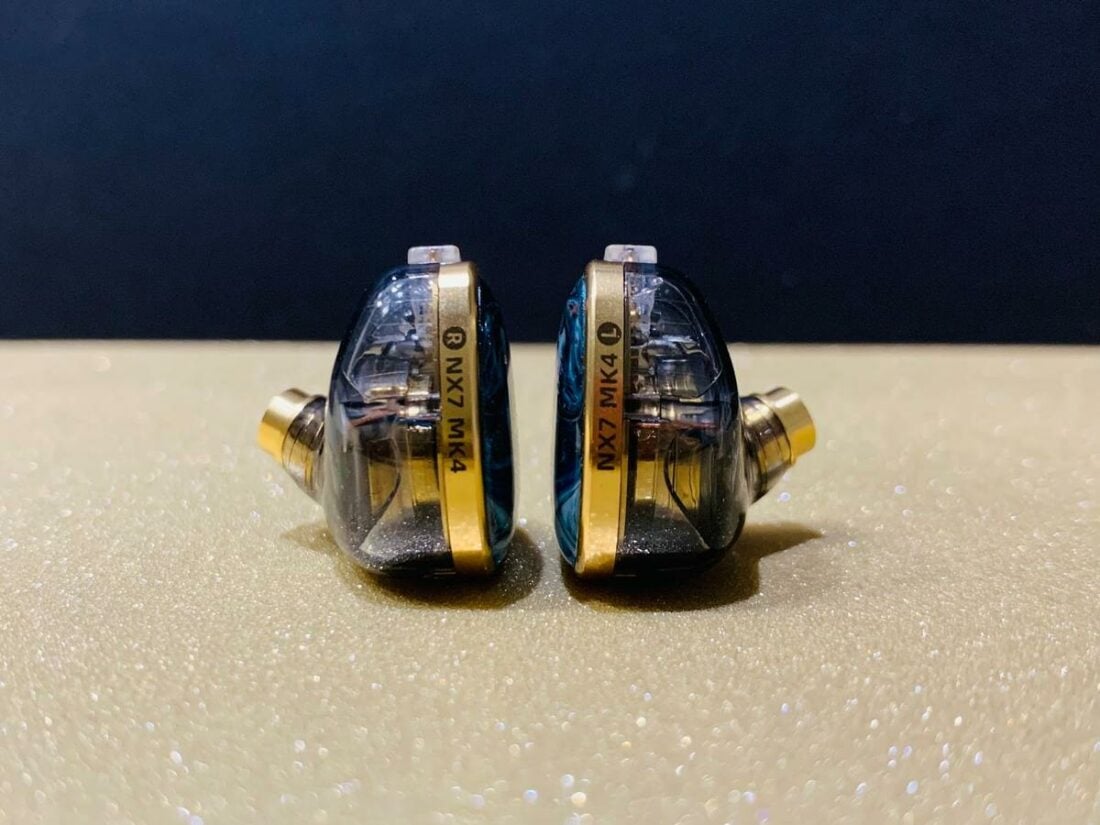
Being vented, isolation is average. Nevertheless, the NX7 MK4 are good enough for outdoor use.
Comfort
The shells are light, and the ergonomics are top-notch; I experienced no discomfort despite using the NX7 MK4 for long listening sessions.
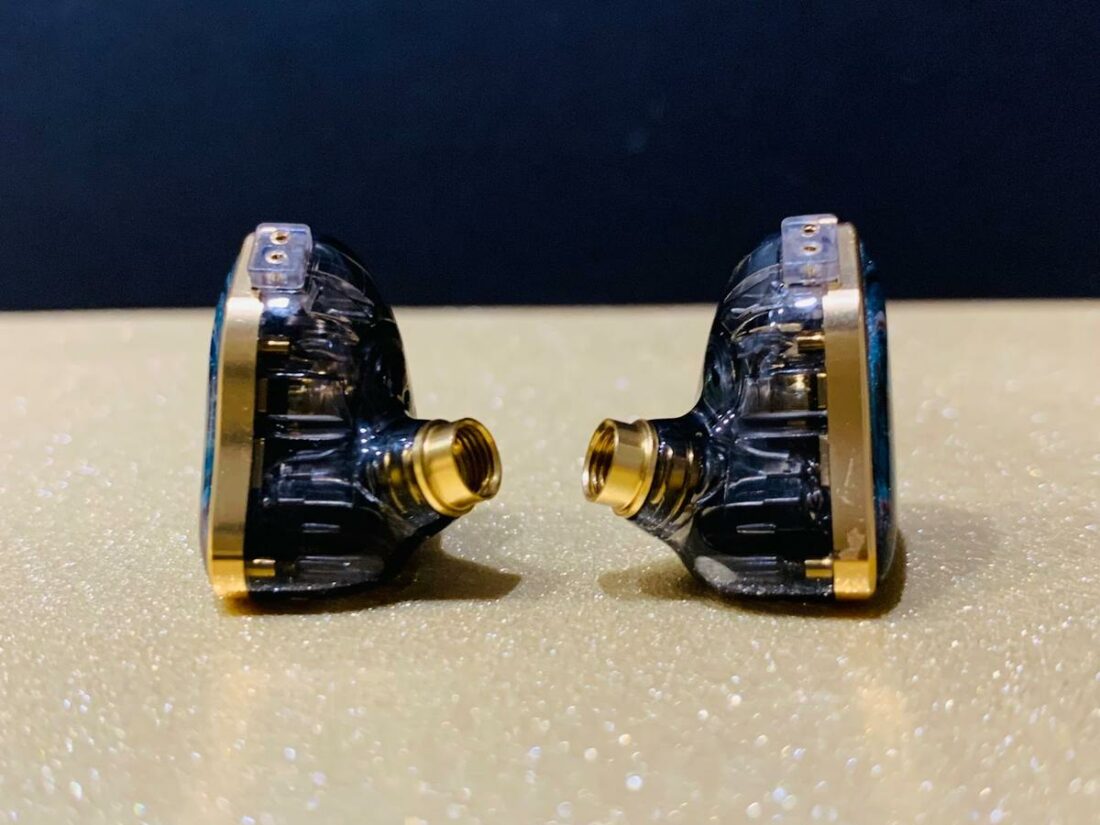
I did not find any driver flex, but this partially depends on ear anatomy and the type of ear tips used, so YMMV.
Internals
The NX7 MK4 feature a mishmash of diverse drivers.
Beryllium-plated dual dynamic drivers handle the bass and midrange. Beryllium is light but has a high modulus of elasticity (i.e., a substance’s resistance to being deformed elastically). This theoretically allows said drivers to be kept low in weight yet provide rigidity and ruggedness. Beryllium drivers can thus provide fast transients coupled with minimal distortion.
Four balanced armature drivers take care of the high frequencies, and a seven-layer piezoelectric driver manages the ultra-high frequencies. Piezoelectric drivers have their benefits in providing rapid transients and adding air to the soundscape.
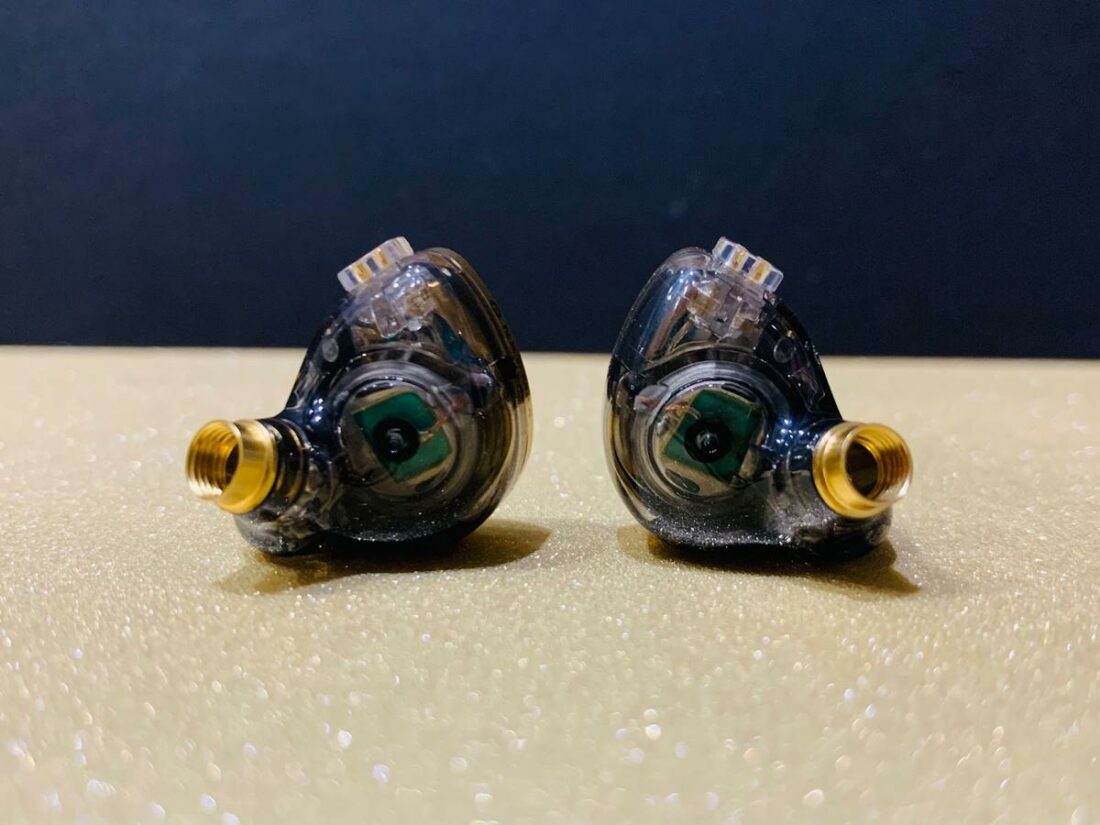
NiceHCK NX7 MK4 Sound
The NX7 MK4 are relatively easy to drive but scale with amplification. Dynamics, bass tightness, micro-details, and soundstage improve when they are fed power.
The black (basshead) nozzle is the most damped (darkest) and hardest configuration to drive at 110 dB/mW. The red (treblehead) filter is the easiest at 113 dB/mW, while the gold (balanced) nozzle lies somewhere in between at 112 dB/mW.
This range has to do with the damping materials contained in the filter, which also tames the upper frequencies to various extents. We will discuss this in further detail below.
Depending on which tuning nozzle is installed, the NX7 MK4 can give a spectrum of sonic profiles, from a treblehead atmosphere, to U-shaped (balanced) acoustics, to a basshead experience.
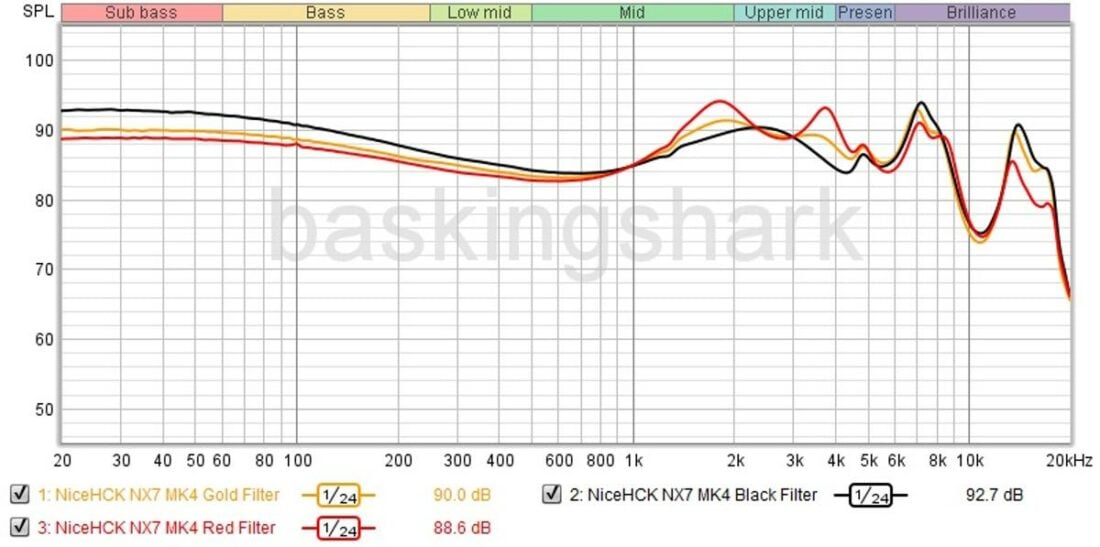
Black (basshead) filter
This filter gives the NX7 MK4 a basshead tuning, with a huge thump at the mid-bass. The sub-bass extends low with a good rumble. Although this bassy setting doesn’t rattle the jaw as much as other bonafide basshead IEMs, it suits bass-forward genres like EDM and hip-hop well enough.
Unfortunately, the bass quality isn’t stellar. It is slow, with mid-bass bleed present. Texturing is below average, and the bass smudges with complicated bass lines.
In fact, the slow bass contributes to incoherency, as the DD bass sounds slower than the BA/piezoelectric drivers, and there is an apparent gulf in speed between them.
This black filter gives a smooth and laid-back signature and provides the thickest note weight of the various nozzles. The mid-bass bleed warms the lower midrange and veils this region, with transparency taking a hit.
There is minimal fatigue with this nozzle installed, and treble is the darkest of the filters, with little air and sparkle. On the flip side, there is negligible sibilance, though vocals are hidden in the background.
Soundstage is the most compressed with this setting. Layering, imaging, micro-details, and instrument separation are below average, and music smears into a nebulous blob.
In essence, this is the filter of choice for bass lovers or treble-sensitive folk. Unfortunately, this black nozzle gives the weakest technicalities of the various filters. One can use this filter if you are yearning for a relaxing signature or head-banging fun rather than for critical listening.
Gold (balanced) filter
This gives a mid-point between the black (basshead) and red (treblehead) filters in tonality. The gold filter makes the NX7 MK4 U-shaped, and the most “balanced” sounding.
This is pretty all-rounded for most music genres, and is my preferred tuning configuration.
Bass is north of neutral, but it still lies on the slower side. There is a tinge of mid-bass bleed, and texturing is average. Sub-bass has a tickle of rumble on bass-heavy tracks.
The upper mids are forward without being shouty (a tough line to balance), and sibilance is mild. Treble extension is not the most sparkly and airy, but micro-details and delicate nuances can still be heard.
Technicalities are also a mid-point between the black (basshead) and red (treblehead) filters. Resolution, micro-details, and imaging are roughly above average for a USD$100 hybrid, but there are more technical rivals at this price point.
Red (treblehead) filter
This filter converts the NX7 MK4 to a neutral bright set. Trebleheads will love this configuration, as the NX7 KM4 become an analytical behemoth, sounding the most technical (but coldest) of the various settings.
Note weight is thinnest amongst the filters. Technicalities are a league or two better than the black (basshead) filter – with clarity, transients, imaging, micro-details, and instrument separation being showcased. Soundstage is the most expansive of the filters.
Bass is clean and fast, with no mid-bass bleed. There’s good texturing and speed, with the neutral bass not smearing even on complex bass movements.
There’s hefty air and sparkle in the treble, but unfortunately, the upper midrange is spicy. Harshness abounds in the treble, and sibilance rears its ugly head. High hats and cymbal crashes sound overemphasized and splashy.
Vocals sound nasal, and timbre is the most unnatural of the various filters.
With the excellent technicalities provided, this filter can be an option for folks who want something for critical listening or for analyzing music.
Trebleheads will surely have a field day. However, our treble-sensitive brethren probably cannot use this setting for prolonged listening.
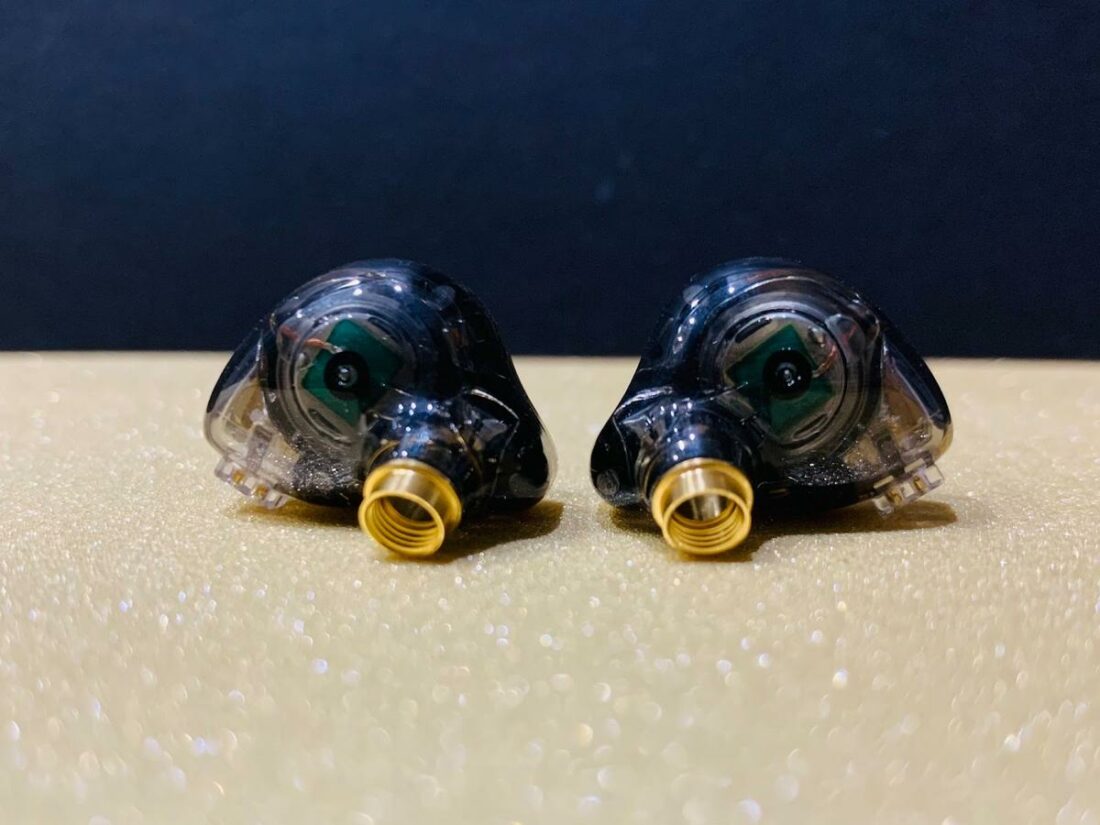
However, even with the red (treblehead) nozzle and the wide-bore ear tips fitted, the soundstage is admittedly an area of weakness on the NX7 MK4. Width, depth, and height of the soundstage are compressed, and music sounds “in your head.”
Thankfully, with the red (treblehead) and gold (balanced) filters, the good imaging makes up for the lack of soundstage, so instruments can still be pinpointed in the headspace.
Sadly, the timbre is somewhat artificial, another bone of contention in the tuning.
A stilted zing is noted in the treble (probably due to the inherent brisk transients in most piezoelectric drivers), and BA timbre is apparent for acoustic instruments. This is more obvious with genres focusing on vocals, woodwind, and brass instruments.
The unnatural timbre can be somewhat mitigated when the black (basshead) filter is used, as note weight is added to the equation.
Comparisons
Comparisons were made, with the gold (balanced) filter, against other hybrid rivals retailing around USD$100. Pure BAs, planars, and single DDs were left out of the equation, as the different transducers have their own pros and cons.
Vs. TRI Starsea
The Starsea are a tunable hybrid that can provide four different sound signatures. Unlike the NX7 MK4, the Starsea operate via tuning switches rather than screwable nozzles.
The Starsea, even on the bassiest switch (called the “amazing bass” setting), are not very bassy, and with the black (basshead) nozzle in place, the NX7 MK4 easily dwarf the Starsea in outright bass quantity.
A few of the treble settings on the Starsea are similar sounding and border on contrivance. Although the Starsea have four tunable settings, their various sound settings are less night or day different than the three tuning options that the NX7 MK4 provide.
Versatility is actually better on the NX7 MK4, even though they have one less tuning option on paper.
The switches on the Starsea require a little card pin or toothpick to flick, which may pose difficulty for those without steady eyes or fingers. Additionally, some of the switches seem to have become hardened on my Starsea.
The NX7 MK4’s tuning nozzles are less finicky to swap, but one may lose the small nozzles, or there may be wear and tear among the grooves with prolonged tightening of the nozzles.
In the technicalities department, the Starsea are slightly better in instrument separation, clarity, imaging, and micro-details. Of note, the soundstage is better in all three dimensions on the Starsea, which is a flaw on the NX7 MK4.
Both pairs of IEMs are not paragons for timbral accuracy.
The Starsea have better isolation, but suffer from driver flex and a pressure sensation in the ears; these are not present in the NX7 MK4.
Vs. Truthear HEXA
The HEXA is a neutral hybrid with a sub-bass boost. The HEXA cannot be tuned, so versatility goes to the NX7 MK4.
It’s a wash regarding these two contenders’ technical performance. Both sets are weak in soundstage, but the HEXA have a hair better imaging, clarity, micro-detailing, and instrument separation when the gold (balanced) filter is used on the NX7 MK4.
If the red (treblehead) filter is introduced, the MX7 MK4 trump the HEXA in technicalities, though the former are more fatiguing.
The HEXA have a mid-bass scoop, so they sound anemic for bass-forward genres like hip hop or EDM, whereas it is no biggie switching the NX7 MK4 to the black (basshead) filter if one wants their bass kicks.
Timbre and coherency are slightly better on the HEXA, though they are harder to drive.
The HEXA have better isolation, but come with a horribly thin, tangly, and microphonic cable. In contrast, the NX7 MK4’s stock cable is multiples better in terms of haptics and feel.
Vs. TRI Meteor
The Meteor are a U-shaped hybrid and cannot be tuned, so the NX7 MK4 have the upper hand when it comes to versatility.
The Meteor have a thicker note weight and sound very analogue-like. The Meteor do not have as good treble extension and air. The Meteor have a similarly small soundstage but are inferior in micro-details, clarity, imaging, and instrument separation.
Timbre is better on the Meteor. The Meteor also have better isolation but suffer from driver flex.
Where to Buy
Conclusion
The near USD$100 region is a really tough market to compete for, with many big boys residing here. The NX7 MK4’s main selling point are the three tuning options on tap that can convert this pair of IEMs from a basshead monster to a detailed trebleheads’ dream.
Otherwise a mid-point compromise of a U-shaped tuning with above-average technicalities can also be achieved. These filters allow the NX7 MK4 to stand out from the competition.
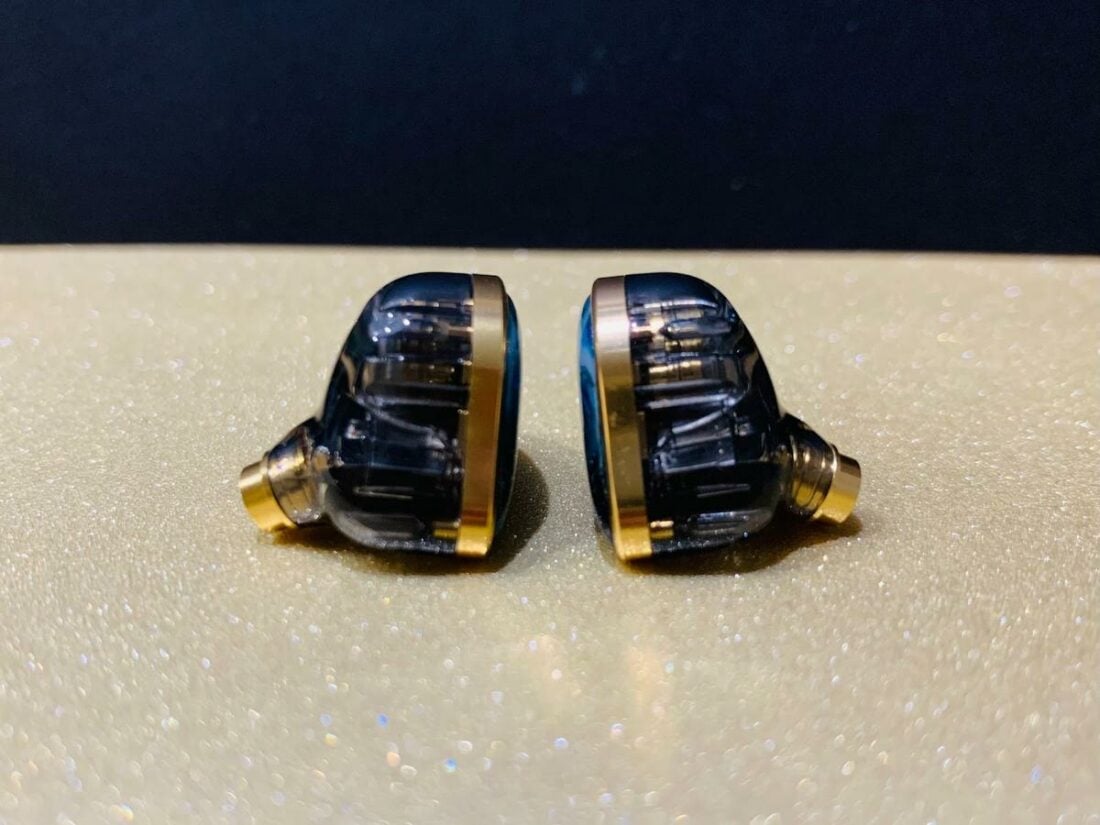
The NX7 MK4 are well accessorized, with a solid build and superb comfort. They are also reasonably easy to drive across all filter settings, so users with a weaker source are not left out of the fun.
Alas, there are some negatives. BA and piezoelectric timbre is present, so timbre freaks may be dissatisfied. Additionally, the soundstage is compressed, though good imaging compensates for this.
Although they boast a tunable concept, the NX7 MK4 have compromises in the red (treblehead) and black (basshead) filters – with these settings sounding too fatiguing and the bass being slow and intruding, respectively.
Nevertheless, the NX7 MK4 definitely do more things right than wrong. One is getting three pairs of IEMs with a single purchase of the NX7 MK4. The tuning nozzles do change the sound and are not a gimmick, unlike some other “tunable” transducers.
As everyone has different levels of hearing health and sonic preferences, what may be fatiguing to someone with the red (treblehead) nozzle may be audio nirvana for another user. Using the black (basshead) filter, the NX7 MK4 may cause headache-inducing bass to bass-shy consumers, while this may just tickle the hair follicles of a diehard basshead!
It is indeed delightful to have three different tuning options in one’s pocket for various case uses – there is a time for critical analysis of music, and, at other times, one just wants to just sit back and chill.
The ambidextrous tuning is a gratifying feather in this tribrid’s cap. Indeed, the NX7 MK4 have truly come a long way from the missteps and tribulations of the previous NX7 ancestors!
